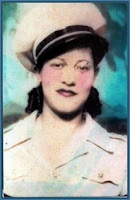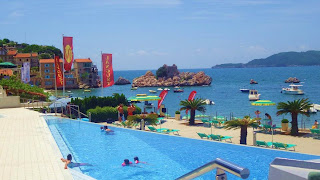So, you want a New York City Photoshoot?
New York City has no shortage of beautiful and iconic backdrops for your shoot. I’ve collected the advice from talented photographers I know, did my own research, plus my own experience from my latest photoshoot in NYC to give you tips on creating a successful photoshoot in NYC or elsewhere. So, regardless if this photoshoot is to add a professional touch to your insta or for timeless family keepsakes I hope this post save you time in your planning efforts.
- Understand the Purpose of Your Shoot
Not only should you have a clear vision of what you want to achieve during this photoshoot, you need to make sure everyone involved understands that too. If you’re imagining an edgy artistic concept while your photographer is thinking grace and elegance, that’s sure to lead to frustration and disappointment in the end.
If a single picture is worth 1000 words, and you’re going to be taking pictures for hours, think of a photoshoot as a photo novel…and you’re the main character. Take some time to understand the story and narrative you want to tell. Check Pinterest, IG, and other social media sites to guide you. Consider making an inspiration board with all the photos that appeal to you. Be able to articulate what attracts you to the photos you select. For example, is it the editing, the use of lights and shadows, the minimalism or maximalism, the filter, the posing that draws you into the photograph?
Take all of this to provide your concept to your photographer.
“Winging it can be fun but you need at least a rough plan of action. Make sure both sides know and agree on a game plan. So plan, plan plan…and then don’t forget to be spontaneous!” — Aaron Mann, photographer, Back Home Again Photos
- Select the Photographer That can Tell That Story
Knowing what kind of shoot you want to achieve is going to help you select a photographer. While a wedding photographer can certainly do other styles of photos, his or her area of expertise is couples, not children. So, if you’re photographing a pack of rug rats, you might want to reconsider. Look at the portfolio and determine if your photographer has the experience to make your vision come to life.
Clearly, not New York City. But the photographer and I worked together to come up with the concept to tell the story of home.
Other considerations:
Also make sure you choose a photographer that knows the city or area.
Make sure your energy levels and personalities complement each other. You’ll be spending a lot of time with each other, you’ll want to be comfortable with each other. In fact, be sure everyone involved in the day has compatible personalities.
When I selected a photographer, I knew I wanted to work with my friend, Keith Brooks. Other places you can check for photographers (outside of a google search) Flytophotographer or Freelance.com or KYMA or even Craig’s list
- Selecting a location
Your inspiration board is going to direct your location. Manhattan is expansive. And you’ll be covering a lot of ground if you try to get pictures of everything. I suggest sticking to one neighborhood. Since my concept was exploring SoHo and Brooklyn, two neighborhoods relatively close to each other, it wasn’t much distance between each shot and offered plenty of things to shoot along the way.
For family photoshoots you’re going to need easy access to bathrooms and room for little ones to release their energy. Consider Central Park, smaller parks, and the Central Park Zoo for photoshoots involving children.
Under the Manhattan Bridge is a popular photo opportunity for tourist.
- Date and Time
The early model gets the most popular tourist attraction. Highly iconic spots: Flatiron building, Brooklyn Bridge, DUMBO, Statue of Liberty, Times Square, the Imagine Mosaic, Top of the Rock are all going to have thousands of tourists doing the same thing as you. Get there early at first light golden hour if possible. Also remember that the light has a way of playing peek-a-boo with skyscrapers casting shadows as the sun moves throughout the day. Check sunrise and sunset schedules. If possible, do a bit of homework and check the way the sun looks at certain locations at certain points of the day and schedule your shoot around those times. Also keep weather and season in mind.
- Hair and Make up
If you’re going to have hair style changes, do the most challenging hair style first. That means, that effortless messy bun that takes a ton of effort to achieve…come with that already done. It’s a lot easier to undo it for later shots than put it up. Bring make-up wipes to get that MAC lip color off and change up the style. Depending on your style, faux lashes never really hurt anyone.
Go to Sephora and have them teach you how to contour. You can make multiple visits to learn different techniques. Better yet, bring a talented friend along or schedule your shoot after getting your makeup applied.
This was a test shot done with my friend’s iPhone while the photographer was adjusting lenses and playing with light. Test shots are helpful for the subject and photographer.
- What to wear
I planned attire that was easy to switch up. I had leggings which could easily be worn under jeans, under a skirt, and as standalone pants (regardless of what the modesty police try to say). That’s a quick change for three outfits. I also wore a tank top under my shirt and sweaters for easy top changes without the need of a changing room. I brought a pair of comfortable walking shoes plus some sassier shoes. I packed a small jacket that was easy to fold into a small tote. Again, your concept is going to guide this. My friend who lives in NYC offered a whole rolling suitcase of outfit changes and boots. Coordinate with your photographer and most fashionable friends on what colors and patterns would work best.
All Black base makes an easy wardrobe change with the right accessories.
- Props
I’m a notebook and reading book kind of girl so those are always my go-to accessories, but consider pens, umbrellas, guitars, cameras, etc.
Fashion accessories can change the overall look of an outfit. Change up a look with hats, scarves, gloves, totes, purses, jackets, change of shoes, hair accessories, sun shades, and faux reading glasses.
On location props- There’s always a street-side florist in the city that that you can buy flowers for a charming prop. Of course, just remember if you buy, instead of borrow, you’ll have to keep up with the flowers for the rest of the shoot or give them away. This last visit to the city, we also saw Christmas trees being sold. Could have been a cute prop doing a two-woman carrying of one of the trees but we passed.
- Posing
Reference Google, Instagram, Pinterest or browse through your favorite magazine to practice and get an idea of at least three poses. Make one your signature pose.
Since I’m kind of a cheese ball, I’ve learned my signature pose is leaping. After reviewing several photos, I realize I’m always in the air. That doesn’t always work for sophisticated shoots. I’d suggest printing off a pose cheat sheet so you can recall some posing ideas on the spot.
Remember to take a few moments to loosen up from time to time. I had a tendency to get stiff and statuesque. Shaking my shoulders out and being reminded to keep my hands and face soft and relaxed helped.
- Pre-coordination considerations
If you’re taking pictures indoor, you might have to make phone calls to the location just to be sure you have permission to photograph locations.
Create an itinerary. Select the locations, the types of shots you absolutely want at that location, and what makes efficient sense considering time of day, lighting, and travel times. Also take consideration on how you will get from point A to Point B. Sometimes it’s more cost and time efficient to take a Lyft. Other times you’ll be better off hailing a cab instead of waiting for a lift. If it’s rush hour, head underground for the metro.
Consider places for bathroom breaks. Starbucks serves as the default NYC public restroom so get an idea where the nearest one is in each of your locations ahead of time. Take the opportunity to go each time you have the chance.
- In addition to your change of wardrobe, be sure to pack: Snacks, pain reliever, water, comfy shoes, dry socks for rainy days, lip glosses, makeup remover, and anything else unique to your shoot.
Get some rest the night before.
Eat a meal before your shoot. It’s best for you and the photographer to grab a bite in a coffee shop before. Reason one: you’ll be on the same eating schedule. Two, it’ll give you a moment to chat about the day.
And of course, relax and have fun during your shoot!
Selfie on the Brooklyn Bridge with my photographer, stylist, and creative director.































